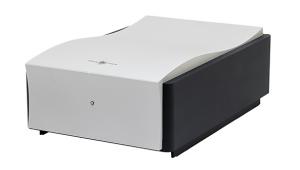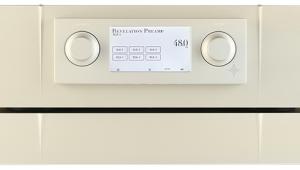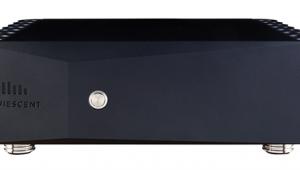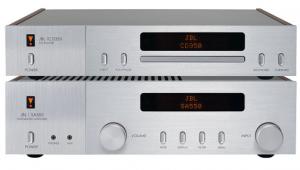PS Audio Stellar Power Plant 3 Mains Regenerator Page 2
![]() Fresh Ears
Fresh Ears
Potentially you can use power amplifiers or integrated amplifiers with the SPP3 but you're limited to high-efficiency Class D or perhaps BASH designs. As no such thing is resident chez moi, I used the SPP3 in the way I suspect many buyers will, and which will probably deliver the best results: to power source items and a headphone amplifier. I used my regular signal chain of a second-generation Mac mini running Windows XP and JRiver Media Center v22, a TC Electronic Impact Twin FireWire audio interface feeding S/PDIF to a Chord Qutest DAC [HFN Nov '18] – this feeding my resident Teac HA-501 [HFN Apr '14] and Matrix M-Stage HPA-3B headphone amplifiers. The Teac, Matrix, Chord and TC – which have power consumptions of 22W, <25W, 3W and <14W, respectively – were all powered from the SPP3 (one per output socket, all operated in Regen mode), and I had a larger PS Audio P10 regenerator [HFN Apr '13] to hand for comparison. My old favourite Sony MDR-MA900 [HFN Oct '12] was chosen as the headphone.
 I used this review as an opportunity to revisit tracks that I've chosen for reviews before but a long time ago, which gave me the opportunity to approach them – and the SPP3's effect on them – with fresh ears. I can summarise the experience by saying that the Stellar Power Plant 3 has the same powers, within its design envelope, to recast your listening experience as the DirectStream P20 did [HFN Apr '19] and the P10 still does in my listening room.
I used this review as an opportunity to revisit tracks that I've chosen for reviews before but a long time ago, which gave me the opportunity to approach them – and the SPP3's effect on them – with fresh ears. I can summarise the experience by saying that the Stellar Power Plant 3 has the same powers, within its design envelope, to recast your listening experience as the DirectStream P20 did [HFN Apr '19] and the P10 still does in my listening room.
In the P20 review I wrote that, 'The effect of unplugging the Qutest from the P20 and plugging it directly into the mains was extraordinary – all the more so as I was using it with the iFi Audio's Micro iPower PSU that I'd found improved the sound of the Qutest when I reviewed it'. And so I found all over again with the SPP3.
Martini Anyone?
The first track I played to assess its effect on the Qutest/iFi Audio was Diana Krall's 'Narrow Daylight' from The Girl In The Other Room [Verve; 96kHz/24-bit download]. It's not Krall's clearest set but relies for its impact on the slightly cloudy piano sound being well resolved and her vocal being picked out quite separately, in as open a soundstage as possible. All these things suffered when the Qutest was plugged into the mains supply rather than the SPP3. The stereo image shrank and dynamic ease and variety were dialled back, both contributing to a 'closed in' sensation in which the thoughtful, wistful lyric had less emotional clout.
Pink Martini's stylish, tongue-in-cheek cha cha 'Où est ma tête?', about losing body parts in various locations in Paris [from Splendor In The Grass; Wrasse WRASS250], suffered in much the same way when deprived of SPP3 power: the soundstage contracted, dynamics were squashed, interest was diminished and the sprightly silliness of it all in large part lost. Where was that impish sense of fun?
Classical music suffered too without the SPP3 doing its thing. Listening to the Harmonia Mundi recording of George Gershwin's Piano Concerto in F [88.2kHz/24-bit conversion from the SACD, HMU 807441], initially with the Qutest connected to the mains, it was difficult to suppose that the Rochester Orchestra could sound any more vigorous or expansive in the opening section of the first movement, or Jon Nakamatsu's piano any more sonorous when it enters. But with the SPP3 in place the stereo image became more obviously layered – I was now aware of the depth dimension – and the entire performance more solid, stable and engaging. I'd completely forgotten what a fabulous recording this is.
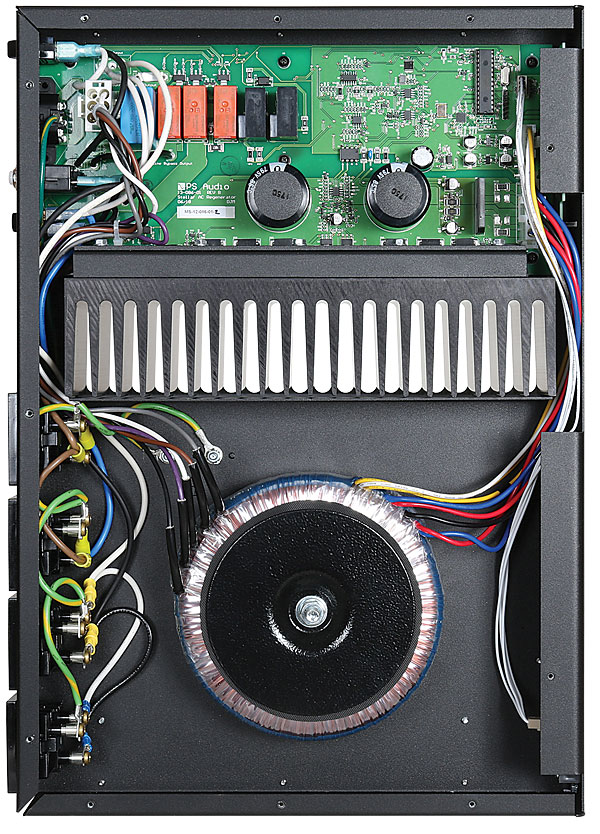
All That Jazz
I concluded in the P20 review that the effect of regenerated mains on the Teac HA-510 headphone amp was less than on the Qutest DAC, albeit still worth having. Maybe it's down to the music I chose but this time I felt the headphone amplifier benefited just as much from the SPP3 being in circuit. Despite, or perhaps because of, its age, Nat King Cole's Welcome To The Club [Audio Fidelity SACD, AFZ153] is an addictive introduction to the joys of easy listening jazz. That Nat Cole's voice is incomparable goes without saying, and the same is true of the Count Basie Orchestra (albeit without its leader on this occasion). Stir in a fine Capitol recording and you have all the ingredients for a magical musical experience.
But for the listening experience to match that potential, the HA-510 needed the SPP3. With the Teac HA-510 receiving regenerated mains, I was put aboard the time machine that high-fidelity sound can be. Yes, the soundstage was more open and airy; yes, the sound was expanded dynamically as much as it was spatially. But the key difference was the sense of being present while masters of their craft, who have long since left us, wove their magic, seemingly without effort. There was a time when I played this track a lot; I'm sure I've never heard it sound as life-enhancingly special.
A Final Wave
I should have told you from the outset that I did all this listening with MultiWave engaged, having found it slightly but definitely preferable to a cleanly synthesised sine wave supply with the P20. Unsurprisingly, I experienced the same with the SPP3. As with the P20, MultiWave just gilded the lily, although it may not have the same positive effect with every system hardware. That's why PS Audio sensibly includes it as an option. But for me it added another small sprinkle of magic dust to what was already outrageously good sound.
Hi-Fi News Verdict
If you've never experienced mains regeneration, it's unlikely you'll ever be able to do so as painlessly to your wallet as with the Stellar Power Plant P3. It won't match its larger siblings in respect of accommodating power amplifiers, but I'm not convinced that's a major downside. What really matters is that it can transform – yes, transform – the sound from source components, DACs and headphone amplifiers. Wow.






